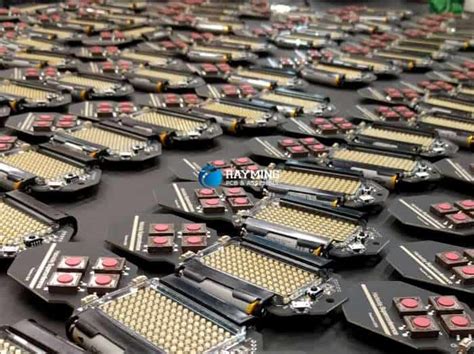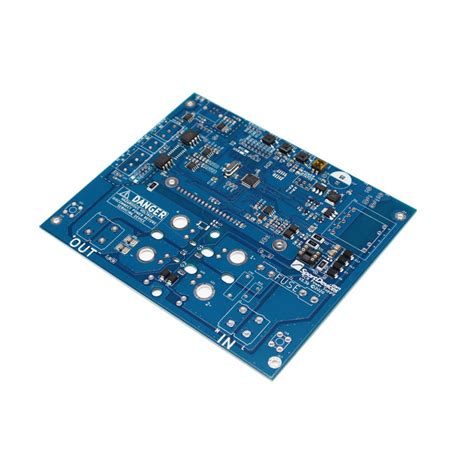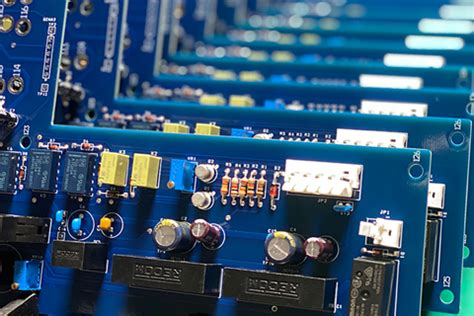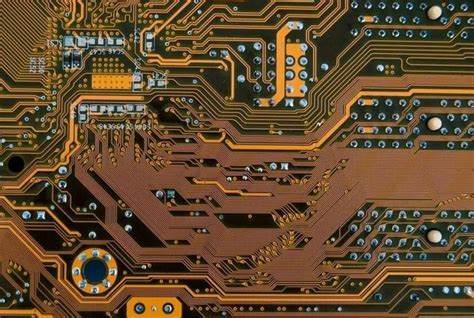Understanding Electronics Assembly Services for Optimal Production

Key Takeaways
Understanding the landscape of electronics assembly services is crucial for businesses aiming to enhance their production processes. One of the primary focuses is on pcb assembly (Printed Circuit Board Assembly), which serves as the cornerstone of many electronic products. Engaging in pcba (Printed Circuit Board Assembly) means leveraging a systematic approach to assembling electronic components, which includes essential techniques such as surface mount technology (SMT) and through-hole technology (THT).
Integrating these techniques not only boosts efficiency but also promotes superior quality in electronic manufacturing. By adopting best practices, such as regular quality control checks and using standardized testing protocols, businesses can mitigate defects and increase reliability in their final products.
Here’s a brief table showcasing key components related to electronics assembly services:
| Component | Description |
|---|---|
| pcb assembly | The process of soldering electronic components to a printed circuit board. |
| pcba | Refers specifically to the completed assembly ready for functional testing. |
| Surface Mount Technology | A method where components are mounted directly onto the surface of PCBs. |
| Through-Hole Technology | A traditional method involving parts inserted into holes in the PCB. |
"Investing in effective electronics assembly services can significantly streamline production and ensure high-quality outputs."
By focusing on these key takeaways, companies can optimize their manufacturing operations while maintaining cost-effectiveness and adaptability in this rapidly evolving industry.
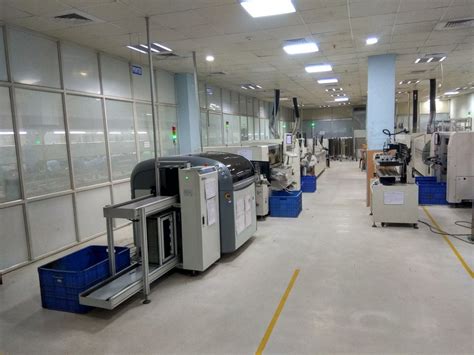
Introduction to Electronics Assembly Services
Electronics assembly services encompass a vital component of the electronic manufacturing landscape, where the precise integration of components is essential for the functionality of electronic devices. At its core, these services focus on the assembly of printed circuit boards (PCBs), which are the backbone of most electronic systems. PCB assembly (often referred to as PCBA) involves not just the placement of electronic components but also entails various processes such as soldering, testing, and inspection. By utilizing electronics assembly services, manufacturers can streamline their production processes and enhance overall efficiency. This comprehensive approach allows businesses to focus on core activities while leveraging specialized knowledge and technology from service providers. As the demand for quality and speed in electronics production continues to escalate, understanding these services becomes increasingly important. In this context, factors such as component selection, design considerations, and assembly techniques play a pivotal role in determining the quality and reliability of the final product. Investing in robust electronics assembly services ensures that products not only meet stringent industry standards but are also delivered on time—thus fostering improved customer satisfaction and competitive advantage in an ever-evolving market landscape.
Key Techniques in Electronics Assembly
In the realm of electronics assembly services, several key techniques play a pivotal role in ensuring high-quality production of electronic devices. One dominant method is Surface Mount Technology (SMT), which involves placing electronic components directly onto the surface of printed circuit boards (PCBs). This technique significantly enhances production speed and allows for higher component density, making it ideal for modern electronic devices. Another vital approach is Through-Hole Technology, where components are inserted into pre-drilled holes on the PCB before being soldered, providing robust mechanical support and reliability in various applications. Combining these techniques effectively can lead to improved assembly quality while reducing manufacturing costs.
Additionally, pick and place machines automate the process of placing components on the PCB, thus increasing accuracy and efficiency. This level of automation not only reduces human error but also ensures faster turnaround times, which is crucial in today’s fast-paced electronics market. Furthermore, rigorous testing protocols such as Automated Optical Inspection (AOI) are essential after pcba (printed circuit board assembly) to detect defects or misalignments early in the production cycle. By implementing these key techniques in electronics assembly, manufacturers can optimize their processes, enhance production efficiency, and ultimately improve product quality in a competitive landscape.
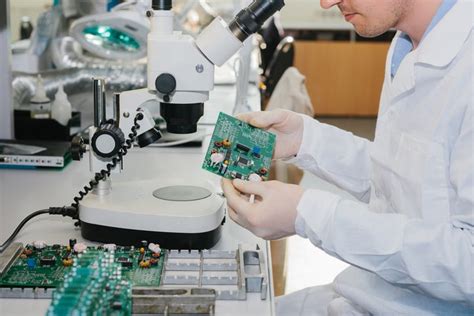
Benefits of Outsourcing Electronics Assembly
Outsourcing electronics assembly services has become a strategic move for many businesses looking to enhance their production processes. By partnering with specialized providers, companies can tap into a wealth of expertise in pcb assembly and pcba, ensuring high-quality outcomes without the overhead of managing in-house production. This approach not only mitigates risks associated with labor costs and production delays but also allows organizations to focus on their core competencies while leveraging the latest technologies in electronics manufacturing. Additionally, outsourcing can lead to enhanced flexibility and scalability, enabling firms to respond rapidly to market demands without compromising on quality or efficiency. These advantages make outsourcing an attractive option for companies aiming to stay competitive in an increasingly dynamic industry. Ultimately, the decision to outsource should align with a company’s long-term strategic goals while offering measurable benefits such as reduced lead times and improved cost-effectiveness in electronics assembly.
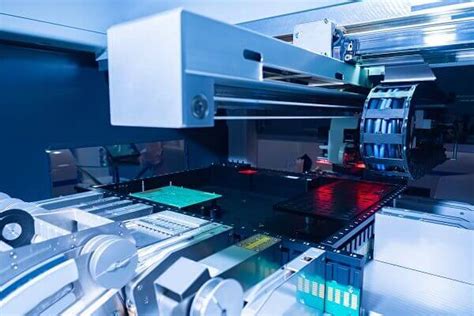
Best Practices for Quality Control in Electronics Production
Maintaining high standards of quality is crucial in the pcb assembly process, which is integral to ensuring the reliability and performance of electronic devices. Quality control in electronics production involves several strategies that can significantly enhance the final product. One fundamental practice is the implementation of rigorous inspection protocols at various stages of the pcba process. This includes assessing components before they are integrated onto the circuit boards, as well as conducting thorough checks during and after assembly to identify any defects early on.
Moreover, utilizing advanced testing methods, such as Automated Optical Inspection (AOI) and Flying Probe Testing, can improve defect detection rates. These techniques not only expedite the quality assurance process but also help in achieving higher accuracy compared to manual inspections. Training staff on these methodologies ensures that everyone involved is well-equipped to uphold quality standards.
Additionally, adopting a continuous improvement mindset through regular audits and feedback loops creates opportunities for enhancing production processes over time. Embracing standardization practices can also streamline operations; by following industry best practices for pcba, manufacturers can minimize variations that may lead to defects.
By focusing on these best practices within quality control, electronics manufacturers can optimize productivity while achieving superior product quality that meets customer expectations effectively.
Equipment and Tools for Efficient Assembly Processes
In the realm of electronics assembly services, having the right equipment and tools is essential for achieving optimal production levels. This category includes critical machinery such as surface mount technology (SMT) machines, which facilitate the efficient placement of components on circuit boards during pcb assembly. Additionally, the incorporation of automated pick and place systems ensures precision and speed, reducing the risk of human error, which is particularly important in processes like pcba.
Other crucial tools include soldering stations designed for both manual and automated techniques; these stations play a vital role in achieving a strong electrical connection between components. Inspection systems, such as Automated Optical Inspection (AOI), help maintain high-quality standards, easily identifying defects or inconsistencies in the assembly process. Furthermore, utilizing advanced software for managing production workflows enhances overall efficiency, enabling teams to track progress in real-time.
In summary, investing in state-of-the-art tools not only improves production efficiency but also elevates the overall quality of electronic products. As technology continues to advance, remaining updated with the latest assembly equipment will position manufacturers to meet growing market demands while ensuring that their processes are streamlined and effective.
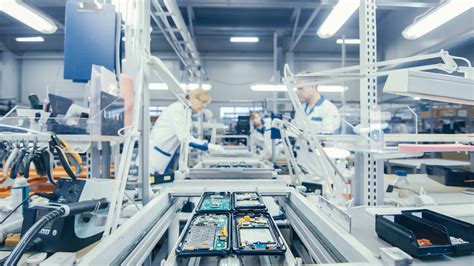
The Role of Automation in Electronics Assembly
Automation plays a pivotal role in enhancing the efficiency and accuracy of electronics assembly services. With the increasing complexity of pcb assembly processes, integrating advanced automation technologies has become essential for manufacturers striving to optimize production. Automated systems, such as robotic arms and vision inspection technology, significantly streamline the pcba process by reducing human error and increasing production speed. Furthermore, automation helps in maintaining consistent quality by ensuring that every component is placed precisely on the circuit boards. This level of precision is crucial not only for achieving high-quality outputs but also for reducing waste and costs associated with rework. As the demand for electronic devices continues to rise, leveraging automation in electronics assembly services allows manufacturers to meet production deadlines while enhancing overall product quality. The strategic implementation of automated solutions thus not only boosts operational efficiency but also aligns with future industry trends aimed at smart manufacturing practices, allowing companies to remain competitive in a rapidly evolving market.
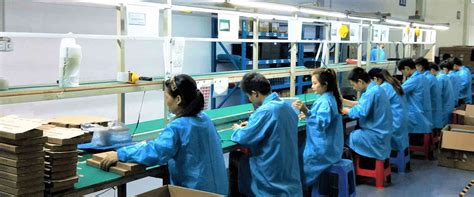
Challenges in Electronics Assembly and Solutions
Electronics assembly, particularly PCB assembly and PCBA, presents a variety of challenges that can impact production efficiency and product quality. One prominent issue is minimizing the risk of defects during the assembly process, as even minor errors in soldering or component placement can lead to significant functional problems. To address this, implementing rigorous testing procedures such as automated optical inspection (AOI) or electrical testing can greatly enhance reliability. Another challenge is managing supply chain complexities, which may lead to delays in component availability. This can be mitigated by cultivating strong relationships with multiple suppliers to ensure a steady flow of materials needed for electronics assembly. Additionally, staying updated with rapid technological advances is crucial, as older equipment can become obsolete and hinder production efficiency. Utilizing modern automation technologies not only increases speed but also improves precision in tasks like soldering and component placement, thereby reducing the likelihood of human error. Furthermore, training employees to adapt to new technologies is essential in overcoming the skills gap that often accompanies technological advances in PCBA processes. By proactively addressing these challenges through strategic solutions, manufacturers can optimize their electronics assembly services while maintaining high standards of quality and efficiency.
Future Trends in Electronics Assembly Services
As we look ahead, the landscape of electronics assembly services is set to transform significantly, driven by rapid technological advancements and changing market demands. The integration of automation is expected to play a pivotal role in enhancing the efficiency of pcb assembly processes. As manufacturers increasingly adopt smart technologies, we can anticipate a rise in the implementation of robotics and artificial intelligence, which will streamline workflows and reduce human error during the pcba process. Furthermore, the demand for customized solutions will facilitate a shift towards flexible manufacturing systems that can quickly adapt to varying production requirements.
Another emerging trend is the focus on sustainability within electronics assembly services. Manufacturers are now prioritizing eco-friendly practices by utilizing energy-efficient machinery and sourcing materials that minimize environmental impact. This commitment to sustainability will not only appeal to environmentally conscious consumers but also enhance brand reputation in an increasingly competitive market.
Additionally, as global supply chains continue to evolve, there will be a greater emphasis on localization in electronics assembly operations. Companies may seek out local suppliers and assembly services to mitigate risks associated with long-distance shipping and geopolitical uncertainties. This trend towards localization can also foster a stronger collaboration between manufacturers and service providers, ultimately leading to improved quality control and faster response times.
In conclusion, keeping abreast of these trends will be essential for businesses aiming to stay relevant in the ever-evolving electronics manufacturing landscape. Understanding and adapting to these changes will enable manufacturers to enhance their production capabilities while achieving efficiencies that drive overall growth.
Conclusion
In summarizing the essentials of electronics assembly services, it becomes apparent that understanding and implementing effective techniques are vital for enhancing production efficiency and quality. The integration of pcb assembly processes facilitates the transition from concept to physical product, allowing manufacturers to streamline operations while maintaining high standards. PCBA services not only offer numerous benefits, such as reducing operational costs and improving turnaround times, but also underscore the importance of precision and innovation in today’s competitive market. Quality control practices, fueled by modern technology, play a crucial role in ensuring that each assembled component meets stringent performance benchmarks. As we look to the future, embracing automation and staying abreast of emerging trends will be essential for firms seeking to maintain their competitive edge in the evolving landscape of electronics production. Ultimately, a thorough grasp of these elements positions companies to navigate challenges effectively and capitalize on new opportunities within the realm of electronics assembly services.
FAQs
What are electronics assembly services?
Electronics assembly services refer to the various processes involved in the production of electronic devices, including PCB assembly and PCBA. These services encompass everything from soldering components to printed circuit boards (PCBs) to complete device assembly.
Why should I consider outsourcing electronics assembly?
Outsourcing electronics assembly services can lead to significant cost savings, access to advanced technologies, and increased production efficiency. By partnering with experts in the field, you can focus on core business activities while benefiting from their specialized knowledge.
What are some key techniques used in PCB assembly?
Key techniques in PCB assembly include through-hole technology and surface mount technology (SMT). Each method has its own advantages and suitability depending on components used and design specifications.
How can I ensure quality control in electronics production?
Implementing best practices such as regular inspections, testing procedures, and adhering to industry standards helps maintain high-quality outputs in your electronics assembly processes.
What role does automation play in electronics assembly?
Automation enhances production efficiency by reducing manual errors, speeding up processes, and allowing for precise operations. Automated systems are integral to modern PCBA, driving cost-effectiveness and scalability.
What challenges might arise during the electronics assembly process?
Challenges include component shortages, thermal management issues, and ensuring adequate supply chain logistics. Addressing these challenges typically requires flexible strategies and robust planning.
For more insights on enhancing your production process through reliable PCB assembly, please click here: Andwin PCB Assembly.

